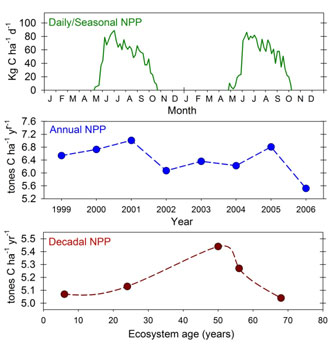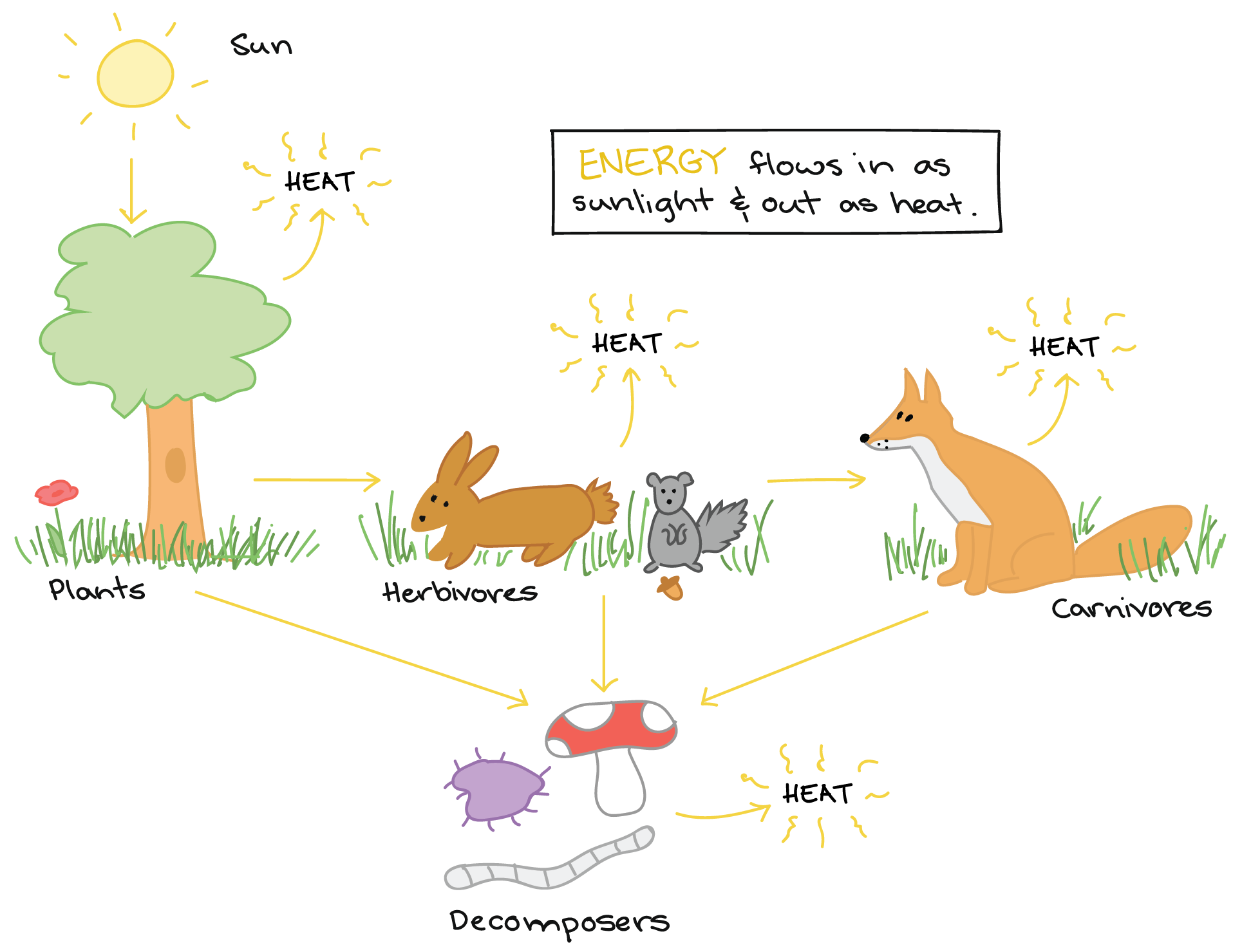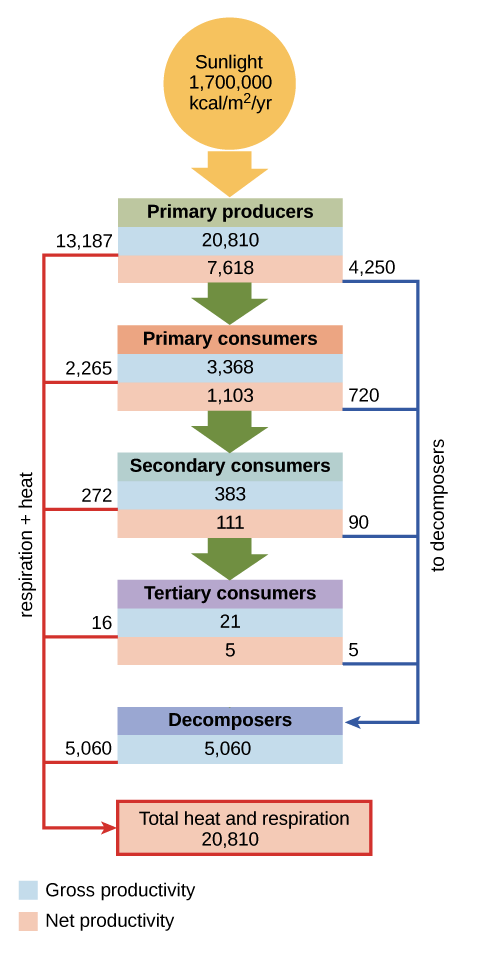Primary Productivity Is Best Described as
Gross primary productivity GPP is the rate at which solar energy is captured per unit area in. Net primary productivity is the amount of energy lost by producers through respiration over time.

Energy Flow Primary Productivity Article Khan Academy
Eturker Points 3077 Log in for more information.

. Primary productivity is of two types. Landscape ecology is best described as the study of A the array of interacting species within a community. The average level of output per worker per year.
In Ecological terms primary productivity is mainly referred as the production of organic compounds through the biological process of photosynthesis. Productivity can best be described as Points. Sugar maples --- and the syrup thats created from their sap --- are an important industry in the northeastern US.
It is also defined as the rate at which solar energy is converted into organic substances through the process of photosynthetic and chemosynthetic autotrophs. Almost all life on Earth. None of the above.
The primary transformation function provided by Federal Express can best be described as. Despite the open oceans low net primary productivity NPP it produces more of the earths biomass per year than any other ecosystem or life zone. The majority of primary producers.
B It is the amount of energy captured by autotrophs that results in an increase in plant biomass. The gross primary productivity GPP of an ecosystem is 35 kgC m 2 year and the energy needed by the producers for their own respiration is 27 kgC m 2 year. Energy flow primary productivity.
What does net primary productivity NPP measure. The efficiency of a companys operations. C It is the rate of primary production in an ecosystem.
It principally occurs through the process of photosynthesis which uses light as its source of energy but it also occurs through chemosynthesis which uses the oxidation or reduction of inorganic chemical compounds as its source of energy. Next Americans disillusionment over world war i led the united states government to adopt a policy of. D physiological and behavioral ways in which organisms meet the challenges of their environment.
The conversion of assimilated energy into new tissue is termed secondary production in consumers and it is conceptually the same as the primary production or NPP of plants. Gross primary productivity GPP and net primary productivity NPP. The productivity of primary producers is referred to as primary productivity.
Productivity describes various measures of the efficiency of production. Which of the following best describes the net primary productivity of an ecosystem. A It is the balance between gross primary production and autotrophic respiration.
B abiotic factors and the community of species that exist in a particular area. The primary transformation function provided by Mercy Hospital can best be described as. Often a productivity measure is expressed as the ratio of an aggregate output to a single input or an aggregate input used in a production process ie.
Net primary productivity is the amount of. Complex networks of interconnected food chains in ecosystems are best described as. In our example the secondary production of the hare is the energy available to foxes who eat the hares for their needs.
The average level of output per worker per hour. 2 a countrys total output. Net primary productivity is the amount of energy lost through respiration by producers subtracted from the gross primary productivity of an ecosystem.
Learn about primary productivity the inefficiency of energy transfer between trophic levels and how to read ecological pyramids. This is the currently selected item. Net primary production NPP is a measure of the annual productivity of the plants in the biosphere.
Primary productivity is the process by which organisms make their own food from inorganic sources. Which of the following best describes gross primary productivity in an ecosystem. They show net primary productivity which is how much carbon dioxide vegetation takes in during photosynthesis minus how much carbon dioxide the plants release during respiration metabolizing sugars and starches for energy.
Which of the following best describes gross primary productivity in an ecosystem. Select all answers that apply. Sugar maples also release chemicals in the soil that decrease net primary productivity in a different species nearby the yellow birch tree pictured below in its glorious autumn colors.
Earthworms some insects and vultures are all examples of _____. Net Primary Productivity NPP or the production of plant biomass is equal to all of the carbon taken up by the vegetation through photosynthesis called Gross Primary Production or. Output per unit of input typically over a specific period of time.
What is an ecosystem. Productivity can best be described as a ratio of production output to what is required to produce it inputs. In general transformation process can be categorized as.
Net primary productivity is the amount of energy captured by producers through photosynthesis over time. The 550 GtC of carbon in the global reservoir of plant biomass has a corresponding NPP of 60 GtC yr 1 which indicates that globally the average carbon residence time on land is approximately 9 years with an average biomass production NPP of 4 tCha 1 yr 1. Economic growth in a country.
In ecology primary production is the synthesis of organic compounds from atmospheric or aqueous carbon dioxide. C the factors affecting the abundance of single species.

Energy Flow Primary Productivity Article Khan Academy

Energy Flow Primary Productivity Article Khan Academy

With Our Infographic Learn All About Agile Testing And Enjoy Numerous Advantages Like Higher Agile Software Development Software Development Life Cycle Agile

7 Ux Principles For Creating A Great Website Webdesigner Depot Productivity In The Workplace Principles Workplace

Gross Primary Productivity And Net Primary Productivity Primary A Level Biology Productivity

Terrestrial Primary Production Fuel For Life Learn Science At Scitable

Energy Flow Primary Productivity Article Khan Academy


Comments
Post a Comment